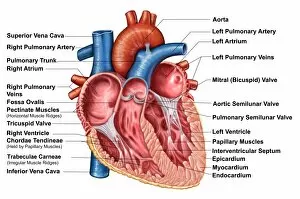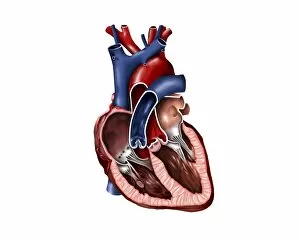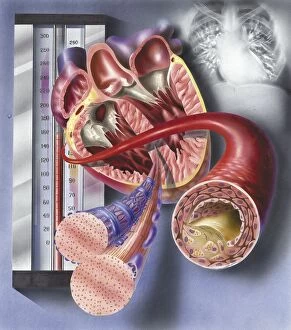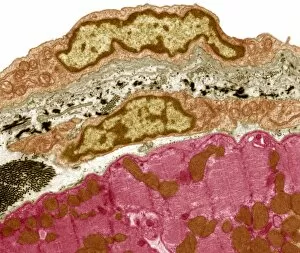Epicardium Collection
The epicardium, also known as the visceral pericardium, is a vital component of the anatomy of the heart's interior
For sale as Licensed Images
Choose your image, Select your licence and Download the media
The epicardium, also known as the visceral pericardium, is a vital component of the anatomy of the heart's interior. When examining a frontal section or cross-section of the human heart, one cannot miss this outermost layer that covers its surface. It serves as a protective barrier and plays an essential role in maintaining cardiac health. In an internal view of the human heart, we can observe how the epicardium interacts with other structures. Its presence is evident alongside muscle cells and even an atherosclerotic artery, highlighting its significance in cardiovascular function. Additionally, when exploring heart valves such as the pulmonary valve, mitral valve, and tricuspid valve, we can appreciate how they work harmoniously with the epicardium to ensure proper blood flow. Comparing a normal heart to one with a patent foramen ovale reveals further insights into this remarkable layer. The epicardium's integrity becomes apparent as it contributes to maintaining structural integrity within the heart chambers. As we delve deeper into understanding cardiac anatomy through enlarged views of specific regions like the left ventricle or atria and ventricles collectively, we realize just how intricate and interconnected each component is. The epicardium stands out amidst these internal views due to its crucial role in protecting and supporting overall cardiac function. Whether studying frontal sections or cross-sections of our most vital organ -the human heart- it is impossible not to acknowledge and appreciate the indispensable contribution made by the epicardium.











